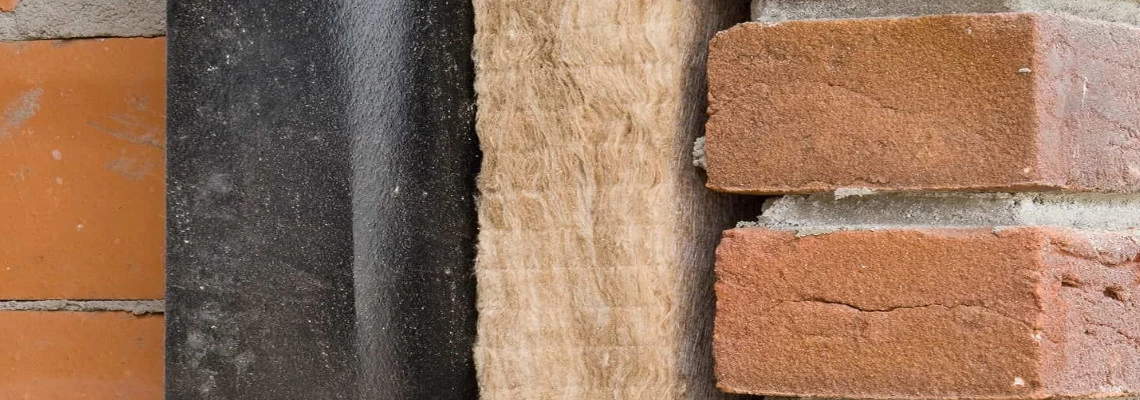
WHY SHOULD WE INSULATE OUR HOMES?*
Imagine a world without insulation — where the cold winter air seeps into our cosy havens, the scorching summer heat infiltrates our sanctuary, and the clamour of the bustling city disrupts our tranquillity. It is insulation that acts as our shield, warding off these external elements and maintaining a desirable indoor climate.
Today, we will explore the crucial topic of insulation and its significance in creating comfortable and energy-efficient homes. If you've ever wondered, "Do I need to insulate my house?" or questioned the importance of insulation in walls, you're in the right place. Let's dive in and discover how insulation can make a remarkable difference in your living space.
WHAT IS INSULATION? / HOW DOES INSULATION WORK IN A HOUSE
Simply put, thermal insulation is an external or internal layer (made either of Mineral Wool, PIR, EPS or Phenolic) installed within a partition wall, on a masonry wall typically on the outer side and occasionally on its inner side. Its purpose is to create a thermal barrier that insulates the warm side of the building from the cold side.
In other words, its main purpose is to prevent direct contact between the external temperature and the one prevailing inside the building.
In fact, insulation plays a vital role in maintaining stable indoor temperatures and prolonging the longevity of buildings by providing effective thermal resistance. With proper insulation, households can potentially reduce their energy consumption by up to 68%. By acting as a barrier, insulation prevents unwanted heat from entering during the summer and preserves valuable warmth during the winter months.
Moreover, insulation acts as a remarkable shield against external noise, creating a serene and tranquil living environment by significantly reducing the amount of sound that enters our homes.
5 IMPORTANCE OF INSULATION
When we talk about insulating a home, we are likely wondering about the benefits that such an investment will bring us. Here are a few of them:
- STABILISES INDOOR TEMPERATURES
Insulation creates a more comfortable indoor environment by maintaining consistent temperatures throughout the year. It keeps the heat in during winter and blocks out excessive heat during summer, allowing you to enjoy a cosy and pleasant living space.
- DIRECT SAVINGS / CAN REDUCE HOUSEHOLD ENERGY NEEDS BY 68%
Proper insulation helps to reduce energy consumption by minimising heat loss or gain. This leads to lower heating and cooling costs and ultimately saves you money on your energy bills.
- MOISTURE CONTROL / INCREASED COMFORT / PROVIDES A HEALTHY INDOOR ENVIRONMENT
Insulation helps to prevent condensation and moisture buildup within the walls, floors, and ceilings of your home. By controlling moisture, it minimises the risk of mould growth, which can have detrimental effects on both the structural integrity of your home and your health.
- REDUCES THE AMOUNT OF EXTERNAL NOISE
Insulation acts as a sound barrier, reducing the transmission of external noises into your home. It helps create a quieter and more peaceful living environment, shielding you from the hustle and bustle of the outside world.
- A “FIT-AND-FORGET” BENEFIT
Once properly installed, insulation typically requires minimal maintenance or replacement. Unlike other home improvement investments that may require regular upkeep or replacement over time, insulation is designed to be a long-term solution that provides ongoing benefits without demanding much attention.
DO I NEED TO INSULATE MY HOUSE?
New buildings only account for 1% of the entire building stock in the UK every year! This means that the United Kingdom’s largest untapped energy source is existing buildings!
That means that 75% of UK buildings were built with minimal or no energy related requirements offering massive potential to make a difference.
By renovating and insulating the 75% of our buildings which are inefficient, peak demand for electricity could be cut by 57GW by 2050 — equal to the current total electricity production capacity of the Netherlands.
Children in cold buildings are more likely to have respiratory problems. There are also clear links between cold housing and excess winter deaths among the elderly. Renovating with insulation contributes significantly to creating warmer buildings.
HOW IMPORTANT IS INSULATION IN WALLS? WHY IS INSULATION IMPORTANT
One of the most important factors for which we should insulate walls is not only for thermal insulation but also for noise insulation. To put this into perspective, noise pollution is a significant environmental health issue in Europe. The European Environment Agency (EEA) estimates that 125 million Europeans, including potentially yourself, are directly affected by traffic noise, and 8 million Europeans experience lower-quality sleep due to high noise levels. Environmental noise is linked to approximately 43,000 hospital admissions, 900,000 cases of hypertension, and up to 10,000 premature deaths per year. The European Commission estimates the social cost of rail and road traffic noise in the EU to be around €40 billion annually.
It is estimated that uninsulated walls contribute to heat loss ranging from 20% to 35%. This is significant, especially considering the rising costs of gas nowadays. Therefore, every £100 spent on energy bills could potentially be reduced by 25% through wall insulation alone. That translates to a quarter of savings solely from insulating the walls.
By insulating walls, not only can we improve thermal performance and reduce energy costs, but we can also mitigate the impact of noise pollution, enhancing the quality of life for occupants. It is a worthwhile investment that not only provides financial savings but also contributes to a healthier and more comfortable living environment.
HOW MUCH DIFFERENCE DOES INSULATION MAKE?
Insulation unlocks massive long-term financial benefits and is cost effective by cutting energy bills. Heating a home is now one of the largest household costs and the best way to reduce bills is with a more efficient, better insulated home. How much you can save depends on e.g. the size of your home and the type of insulation you install.
Here are the specific differences you will experience by insulating your home:
IMPROVED COMFORT
You will no longer experience cold mornings or drastic temperature fluctuations in your home. Insulation helps to maintain a stable indoor temperature, ensuring that you feel comfortable throughout the day. Temperature changes should be minimal and gradual, with fluctuations of no more than 5 degrees within an hour.
REDUCED NOISE LEVELS
Insulating your home, especially with mineral wool insulation, can significantly reduce noise levels by approximately 40 decibels (dB). This is a substantial reduction, considering that it is comparable to the noise level of a loud conversation.
COST SAVINGS
Every £1 spent on insulation will result in savings of around £0.40. This makes insulation one of the best investments you can make for your home. Not to mention the benefits it brings to the planet by reducing energy consumption.
MOISTURE CONTROL
By insulating your home and creating a barrier between the external environment and the interior walls, you can effectively control the flow of temperature. This helps to prevent moisture buildup and the development of mould on your walls. Depending on the specific situation, insulation can help reduce moisture levels in the home by approximately 30% to 40%. It helps to maintain moisture at the appropriate humidity level, typically between 30% and 60%, which is considered the ideal range for indoor comfort and preventing the growth of mould and mildew.
HOW TO INSULATE YOUR HOUSE UK/ INSULATING METHODS IN UK
There are several methods of insulating homes in the UK, each with its own advantages and disadvantages. The majority of homes in the UK are built with brick walls, which pose challenges when it comes to insulation while preserving the brick aesthetics. One of the most effective methods for insulating such walls is the partial fill or full fill insulation method.
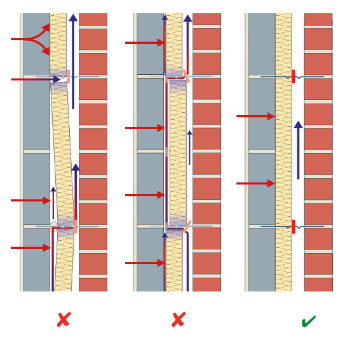 In the case of partial fill insulation, insulation is placed between the brick wall and the inner wall during the construction of the house.
In the case of partial fill insulation, insulation is placed between the brick wall and the inner wall during the construction of the house.
A gap is left between the insulation and the main wall of the building, and wall ties are used to secure the insulation in place.
This method is usually more cost-effective but can be prone to air circulation, which can lead to moisture issues.
Another method for insulating the walls of homes in the UK is full fill cavity insulation. 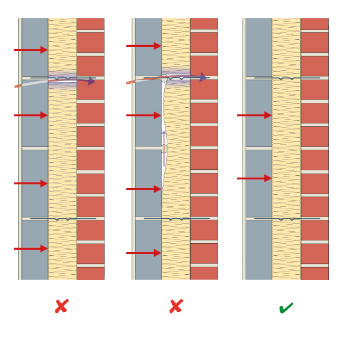
With this method, the insulation completely fills the cavity between the masonry wall and the outer brick layer, leaving no gap.
While this method is more expensive, it provides a continuous insulation layer and eliminates the risk of cold air drafts.
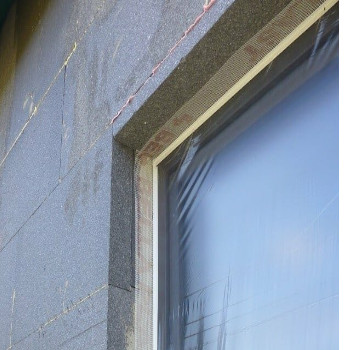 Another innovative method in the UK is the use of External Wall Insulation (EWI) systems for insulating external walls. This involves attaching insulation materials such as EPS (Expanded Polystyrene), DD Rockwool, or phenolic boards like Kingspan K5 to the exterior walls using adhesive. The insulation is then covered with a reinforcing mesh, embedded in a layer of adhesive, and finished with a thin EWI render.
Another innovative method in the UK is the use of External Wall Insulation (EWI) systems for insulating external walls. This involves attaching insulation materials such as EPS (Expanded Polystyrene), DD Rockwool, or phenolic boards like Kingspan K5 to the exterior walls using adhesive. The insulation is then covered with a reinforcing mesh, embedded in a layer of adhesive, and finished with a thin EWI render.
The EWI method is considered one of the best options for wall insulation. It does not require any internal interventions, preserving the space inside the building. It provides a complete separation between the interior and exterior conditions, forming a protective layer around the building. This method is relatively cost-effective and allows for various design options and finishes.
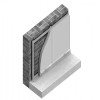 A less commonly used method of insulating walls in the UK is the application of insulated plasterboards with an insulating core such as EPS, PIR, or phenolic foam. The most well-known product in this category is Kingspan K118, along with its competitor Xtratherm (Unilin) XT/TL. These products offer the convenience of a 2-in-1 solution, where the boards are simply adhered to the walls and levelled using a spirit level. This method is relatively fast, but it can be messy due to the amount of adhesive involved during installation. As a result, builders are increasingly opting for the use of the same product but installed with fixings, as seen in products like Xtratherm (Unilin) XT/TL MF. This variation of the product features an aluminium foil backing instead of paper.
A less commonly used method of insulating walls in the UK is the application of insulated plasterboards with an insulating core such as EPS, PIR, or phenolic foam. The most well-known product in this category is Kingspan K118, along with its competitor Xtratherm (Unilin) XT/TL. These products offer the convenience of a 2-in-1 solution, where the boards are simply adhered to the walls and levelled using a spirit level. This method is relatively fast, but it can be messy due to the amount of adhesive involved during installation. As a result, builders are increasingly opting for the use of the same product but installed with fixings, as seen in products like Xtratherm (Unilin) XT/TL MF. This variation of the product features an aluminium foil backing instead of paper.
Insulation using insulated plasterboards is generally favoured by installers because it allows for rapid completion of the room and swift progression to the next project. However, in certain extreme cases, it may lead to the relocation of the dew point within the wall, potentially resulting in moisture formation in the room. Therefore, it is important to increase air exchange within the room by using additional ventilation or trickle vents in windows when opting for this method.
When it comes to external wall insulation in the UK, we have covered all the available methods.
It's important to carefully consider the advantages and disadvantages of each method and consult with professionals to determine the most suitable option based on your specific requirements. Every method has its unique characteristics, and the right choice will depend on factors such as budget, desired application speed, moisture considerations, and aesthetic preferences. Ultimately, proper insulation plays a crucial role in enhancing energy efficiency, improving comfort, and creating a sustainable living environment.
CONCLUSION
Insulation is a vital component in creating energy-efficient, comfortable, and sustainable homes. Whether it is insulating walls, using external wall insulation systems, or utilizing insulated plasterboards, each method has its benefits and considerations. From enhancing energy efficiency and regulating indoor temperatures to reducing noise levels and controlling moisture, insulation provides a range of advantages that contribute to a healthier and more enjoyable living environment. By investing in proper insulation and consulting with professionals, homeowners can achieve long-term cost savings, improved comfort, and reduced environmental impact. Choose the right insulation method for your specific needs and enjoy the benefits it brings to your home.
Related articles:
INSULATION COST COMPARISON: EPS vs PIR vs MINERAL WOOL
TOP INTERIOR WALL INSULATION PRODUCTS: A COMPREHENSIVE GUIDE
INSULATION BUILDING REGULATIONS IN THE UK: A COMPREHENSIVE GUIDE
A COMPREHENSIVE GUIDE TO INSULATED PLASTERBOARD FOR CEILING INSULATION
THE SOUNDPROOFING POWER OF WOOL: UNVEILING THE TOP CHOICES
Bibliography:
1.eurima.org, European Insulation Manufacturers Association, ‘How to install mineral wool insulation’, accessed 12 July 2023
*All the information provided in the content published on Insulationgo blog is for informational and educational purposes only. Insulationgo LTD makes every effort to ensure the accuracy and timeliness of the content, but we do not assume any responsibility for any errors or omissions.
The information presented on this blog should not be considered as professional advice or a substitute for consulting relevant experts. Before making any purchase decisions or taking action based on the information presented here, it is strongly recommended to contact the product manufacturer directly to verify the details and ensure its suitability for your specific needs.
By using this blog, you acknowledge and agree that Insulationgo LTD shall not be held liable for any damages, losses, or inconveniences arising from the use or reliance on the information provided herein. This limitation of liability applies to all users of the blog, including but not limited to visitors, readers, and subscribers.










































































































